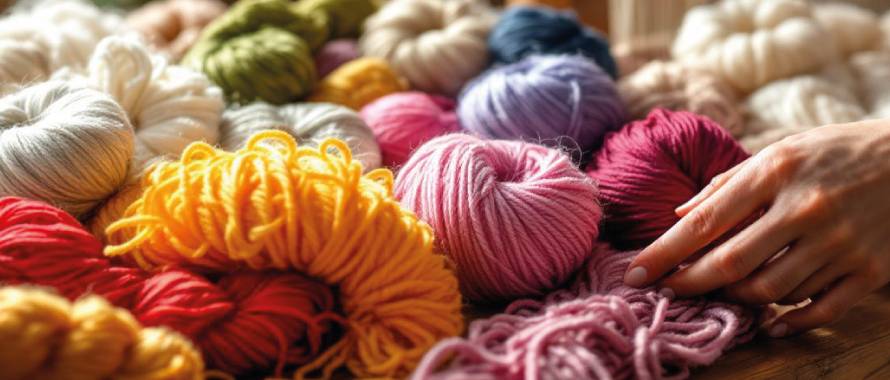Choosing the right fabrics can make or break your fashion collection. Understanding how to pick fabrics that align with your design vision, brand identity, and target audience is crucial for creating pieces that are both stylish and functional. In this comprehensive guide, we’ll explore the key factors to consider when selecting fabrics for your fashion collection to ensure your designs stand out in a competitive market.
Why Knowing How to Pick Fabrics is Essential
Before diving into the details, it’s important to understand why knowing how to pick fabrics is a vital skill for every fashion designer. The right fabric:
- Enhances the design’s visual appeal
- Determines comfort and functionality
- Impacts garment durability and quality
- Influences production costs and scalability
Whether you’re a budding designer or an established brand, mastering how to pick fabrics can elevate your collection from ordinary to extraordinary.
1. Define Your Collection’s Purpose and Style
Before selecting any fabric, clearly define your collection’s purpose and aesthetic. Understanding the style and function of your designs helps narrow down fabric options. Ask yourself:
- Who is your target audience? (Luxury clients, casual wearers, eco-conscious buyers)
- What season are you designing for? (Spring/Summer or Fall/Winter)
- What emotions do you want to evoke? (Bold, romantic, minimalist)
Knowing how to pick fabrics that align with your collection’s theme ensures consistency and cohesion across all pieces.
2. Understand Fabric Types and Their Properties
A key part of learning how to pick fabrics is understanding the different types of textiles and their properties. Here’s a quick breakdown:
Natural Fabrics
- Modal and Tencel: Produced from cellulose, soft, durable and moisture absorbing
- Cotton: Breathable and versatile, ideal for casual and summer wear
- Silk: Luxurious with a smooth drape, perfect for formal and eveningwear
- Linen: Lightweight and airy, great for warm climates
- Wool: Warm and insulating, best for winter collections
Synthetic Fabrics
- Polyester: Durable and wrinkle-resistant, commonly used in affordable fashion
- Nylon: Strong and lightweight, great for activewear
- Spandex (Lycra): Stretchy and flexible, perfect for sportswear and bodycon designs
Blended Fabrics
- Combine natural and synthetic fibers to balance comfort, durability, and affordability.
Understanding how different fabrics behave is essential when deciding how to pick fabrics that will enhance your designs.
3. Consider Seasonality and Functionality
When figuring out how to pick fabrics for your fashion line, always consider the season and how the garment will be used:
- Winter Collections: Choose heavier fabrics like wool, velvet, and tweed for warmth.
- Summer Collections: Opt for lightweight fabrics such as cotton, linen, and chiffon for breathability.
- Activewear: Use moisture-wicking and stretchable fabrics like spandex and nylon.
- Formal Wear: Select luxurious materials like satin, silk, and lace.
Matching the fabric’s functionality with the garment’s purpose ensures comfort and practicality.
4. Prioritize Sustainability and Ethical Sourcing
Sustainability is a growing trend in fashion, and knowing how to pick fabrics with minimal environmental impact can set your brand apart. Consider eco-friendly options:
- Organic Cotton: Grown without harmful chemicals
- Tencel (Lyocell): Made from sustainably sourced wood pulp
- Hemp: Naturally resistant to pests, requiring minimal water
- Recycled Fabrics: Polyester and nylon made from recycled materials
- Deadstock Fabric: Unused surplus fabric from manufacturers, reducing waste
Choosing sustainable fabrics not only helps the planet but also appeals to eco-conscious consumers.
5. Test Fabric Quality and Performance
Once you’ve shortlisted fabrics, it’s crucial to test them before full-scale production. Knowing how to pick fabrics involves assessing:
- Shrinkage: Wash and dry samples to check for size changes.
- Colorfastness: Test for fading or bleeding after washing.
- Drape: Drape the fabric on a mannequin to see how it falls.
- Stretch and Recovery: Test elasticity for stretchable garments.
These tests help ensure the fabric meets your quality standards and performs well in real-life conditions.
6. Balance Creativity and Budget
Learning how to pick fabrics also means balancing your creative vision with budget constraints. Premium fabrics can elevate your collection but may not always be feasible for mass production.
- Invest in statement pieces with high-end fabrics.
- Use cost-effective materials for staple items.
- Negotiate with suppliers for bulk discounts or flexible payment terms.
A strategic mix of luxury and affordable fabrics can help you maintain both design integrity and financial health
7. Partner with Reliable Fabric Suppliers
Establishing strong relationships with trustworthy fabric suppliers is essential when learning how to pick fabrics. Look for suppliers who offer:
- Consistent quality and supply
- Reasonable minimum order quantities (MOQs)
- Custom options for colors and prints
- Ethical sourcing certifications
Attending fabric trade shows and textile expos can connect you with reputable suppliers and keep you updated on fabric trends.
8. Stay Informed About Fabric Trends
Fashion evolves quickly, and staying informed about fabric trends can help you make informed decisions. To stay ahead:
- Follow industry leaders and designers for inspiration.
- Read fashion forecasting reports from platforms like WGSN.
- Attend textile exhibitions such as Première Vision or Texworld.
Knowing how to pick fabrics that are both trendy and timeless can give your collection a competitive edge.
9. Factor in Production Scalability
When deciding how to pick fabrics, consider how easily the material can scale with your production needs:
- Availability: Can the fabric be reordered for large production runs?
- Consistency: Will the quality remain the same in bulk orders?
- Lead Times: Are delivery timelines compatible with your production schedule?
Choosing scalable fabrics ensures smooth manufacturing and timely delivery.
Final Thoughts on How to Pick Fabrics
Mastering how to pick fabrics is a critical skill that blends creativity, functionality, and strategy. By understanding fabric types, testing performance, considering sustainability, and balancing costs, you can create a cohesive, high-quality fashion collection that resonates with your target audience.
The fabrics you choose are more than just materials—they are the foundation of your brand’s story. Select them thoughtfully and let them bring your designs to life.




